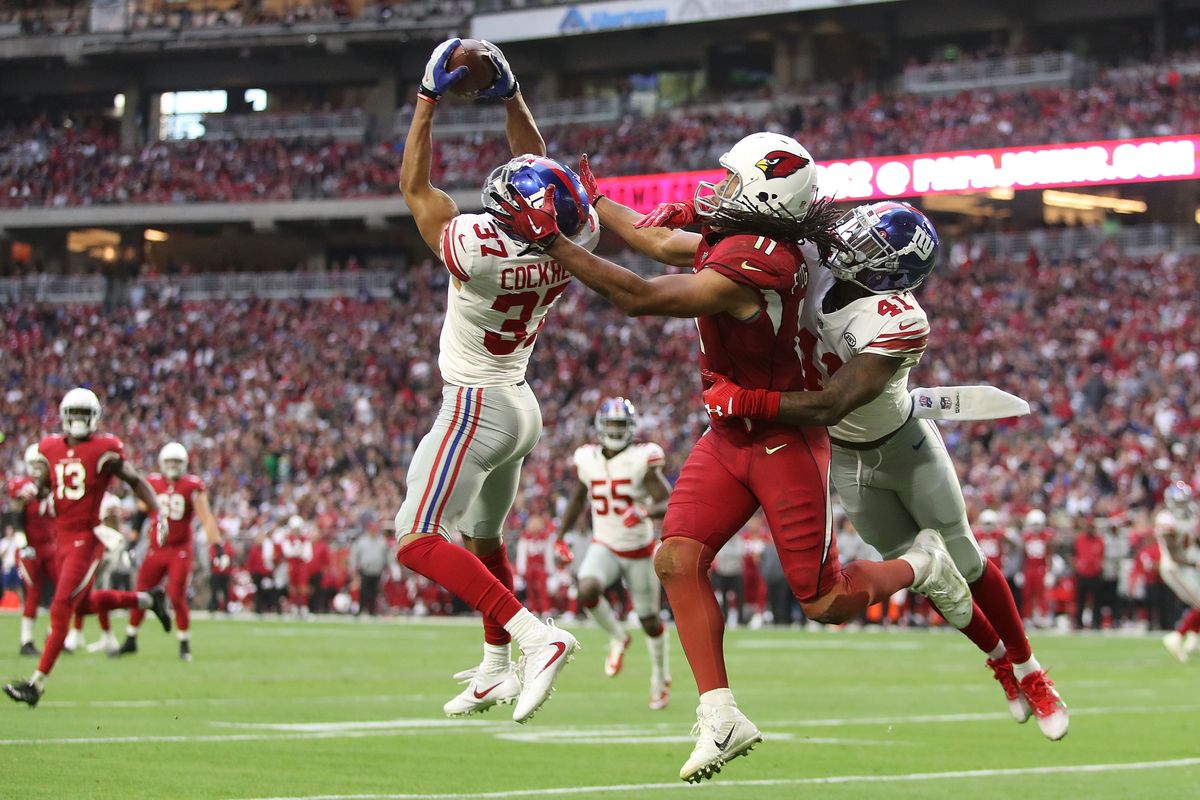When the Panthers signing of Bashaud Breeland fell apart after the former Washington player failed his physical during the first week of free agency, there were understandable concerns about the Panthers’ cornerback group following the trade of Daryl Worley. However, with the signing of Ross Cockrell the Panthers will hope that they have found a starting partner for James Bradberry, and in doing so have removed corner from the list of immediate needs; while Cockrell was only signed to a two year deal, Cockrell will start next season aged just 27 and has made 32 starts over the past three seasons, making 156 tackles, 36 pass deflections and five interceptions. He was one of just twelve players last year to post a 35-10-3 stat line despite only starting nine games and was rated as a top-50 corner by both PFR and PFF, with PFF rating him as high as the 39th best corner in the league last year. All of this is promising, especially given his contract, but what does he show on tape?
Zone Coverage
The Panthers play a lot of zone coverage, and while they played significant more man last season they still ranked fifth in the NFL in the amount of zone coverage run; the ability to be effective in this regard is going to be crucial to how effective Cockrell will be in the Panthers’ scheme. Luckily, Cockrell was one of the absolute best zone corners in the NFL last season, and that is evident when watching him on tape; a crucial aspect of zone coverage is the ability to read and react to what is in front of you. This requires both the awareness to recognize what is happening and the athleticism to get there. On the following play, the receiver runs a simple sit-down against Cockrell who is able to both pressure the catch and prevent any yards after the catch (For reference, Cockrell wore #37 in New York):
He does occasionally get ahead of himself, and he needs to be careful not to get to the man before the ball, as he does here:
Where Cockrell was particularly effective was when used to cover the deep outside third in cover three, as he does on the following plays. Here, he shows not only the deep speed to follow the man down the field, but the ability to locate the ball for an interception on the following play:
What is really impressive about his play is how he is able to operate smoothly out of the half-slide. On this next play, he is backpedalling to the deep-third as on the previous play, but when the receiver fakes the outside route, he is able to hesitate without having to switch his feet. This then allows him to either transition outside or continue up the field effectively, and limits his vulnerability to double moves.
Again, he looks to make a play on the ball rather than settling for the incompletion. While this might lead to the occasional additional reception, it also will create some much-needed turnovers for the Panthers’ defense; one of the goals for this season was for the Panthers to improve their plays on the ball after failing in that area for much of 2017. Encouragingly, he also shows an understanding for help and leverage, as on the following play he has safety help over the top and so is able to simply wait underneath and out; this pass should never have been thrown, as Cockrell is clearly in good position, but he not only shows the awareness and understanding of help to remain in this position, but also the ability to make a play on the ball:
For a defense that plays a lot of zone coverage, cover three in particular, Cockrell’s awareness and ball skills make for a valuable acquisition.
Man Coverage
Where Cockrell looks to offer an improvement over Worley is in his ability in man coverage; this was something that Worley struggled with last season and is likely the main reason why the Panthers looked to move on from him. The major reason for his struggles was a lack of lateral agility, as receivers would often be able to create easy separation at the head of the route. This was especially true on routes such as slants where he was often victimized, and somewhere where Cockrell looked far more comfortable:
In general, he shows a far greater fluidity through routes, with a vastly improved change of direction and speeds. On the following plays, he shows the ability to react to inside moves and to then break upwards against double moves:
Where he also has an advantage over Worley, who ran a 4.64 at the combine, is in his speed. On each of the following plays, Cockrell shows a far greater top-end speed and is able to follow the receiver across the field on routes designed to create separation using speed:
This doesn’t mean that he doesn’t occasionally allow completions on such routes, but those completions are not allowed to turn into larger gains as he has the speed to be in place to make a quick tackle:
Where Cockrell also stands out is in his ability to contest passes, as seen on some of the above plays; this is something that the Panthers have been rather poor at in recent years, allowing completions even when the defender is in good position, with plays like the following being extremely valuable:
What’s more, Cockrell also shows great hands, as evidenced not only by the interceptions such as those already seen, but on spectacular plays such as the following:



